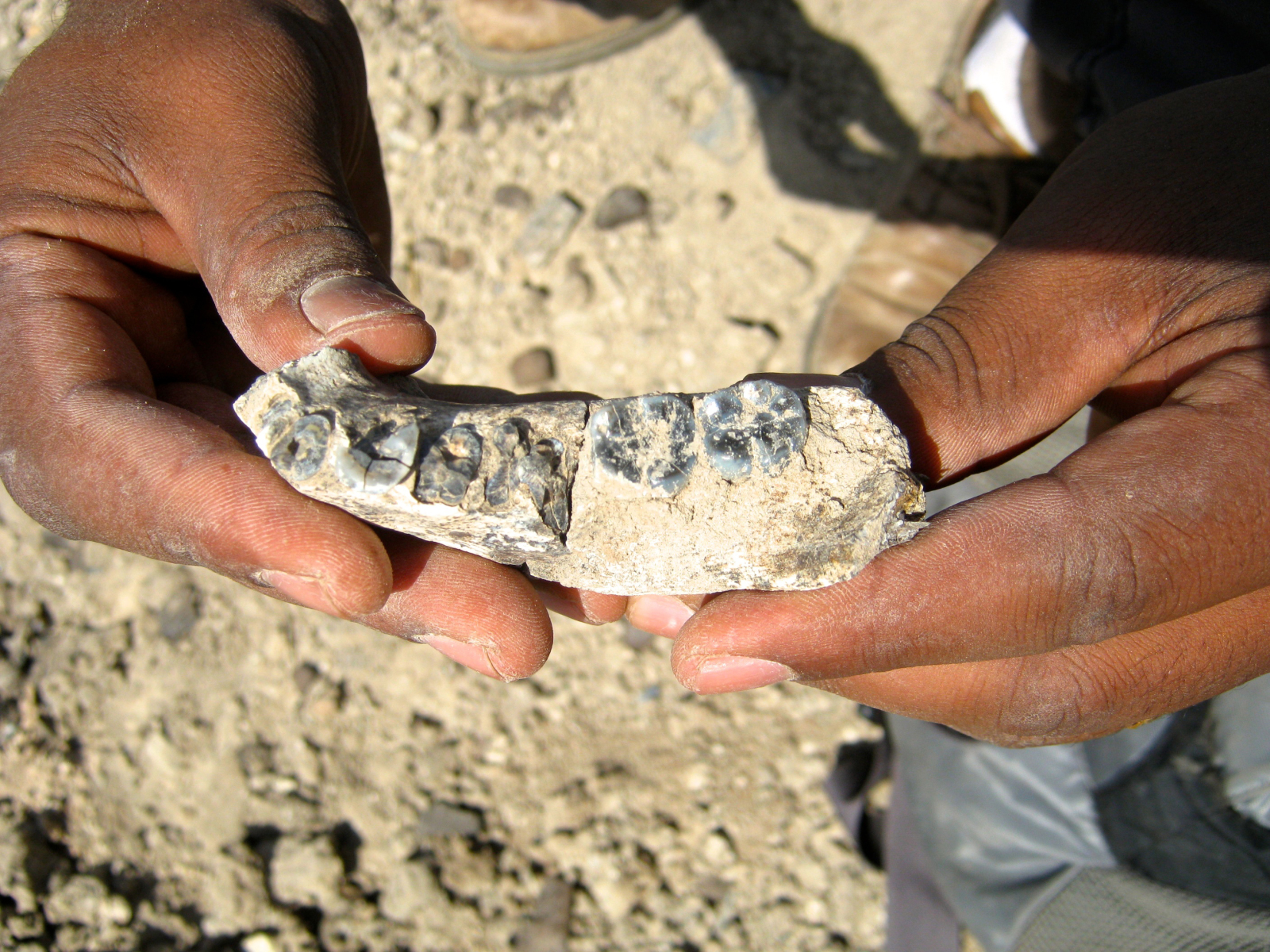Earliest human fossil found
Interview with
Fossils of our genus, Homo, had previously only been found dating back to about 2.4 million years ago. Older fossils, like the famous female specimen called "Lucy" are from a more primitive lineage called Australopithecus.  Now, scientists working in Ethiopia have uncovered evidence suggesting the species that gave rise to modern humans is older than we thought. Speaking to Chris Smith, Bill Kimbel is one of the team that made the discovery...
Now, scientists working in Ethiopia have uncovered evidence suggesting the species that gave rise to modern humans is older than we thought. Speaking to Chris Smith, Bill Kimbel is one of the team that made the discovery...
Bill - The specimen was found by an Ethiopian graduate student of ours, a man by the name Chalachew Seyoum in January 2013 at a site known as Ledi-Geraru. This is in the Ethiopian part of the East African Rift Valley. He was part of a field survey project. They, as is commonly the case, identified a very specific area of exposed sedimentary rock to survey or explore one morning and focused on a hillside which was dotted by freshly eroded bones. It's a very rich hillside. Chalachew was walking up the slop of this hill, rather steep hill and near the top, he spotted just poking out of the loose eroded sediment, a premolar tooth situated in a fragment of jaw that our team is attributing to one of the earliest known representatives of the genus Homo at about 2.8 million years ago.
Chris - How do you know how old that specimen is?
Bill - In eastern Africa, we're fortunate that the sites are in a rift valley setting and the east African rift valley over millions of years has been tectonically very active with many volcanoes. Back in the time of the Ledi-Geraru early Homo, ash was erupted and coated the landscape and that ash layer was incorporated into the growing stacks of sediments being deposited by streams along their banks. We now move forward to 2013, the spot at which the jaw was found was located about 10 metres above this volcanic ash layer. That layer, thanks to radio-isotopic techniques of dating, that ash layer was nailed down at 2.82 million years ago. The jaw being located just 10 metres above it obviously will be very slightly younger and we calculate, the most likely age of the jaw is between 2.75 and 2.79 million years old or thereabouts.
Chris - What does the fragment actually look like? What does it comprise?
Bill - The jaw consists of the left side of the lower jaw or mandible with all three of its molars, in front of the molars, both of its premolars, a little tiny bit of the canine tooth, but mostly it's root in place. And then the sockets of the front two teeth, the two incisors, broken just about in the midway through the chin so that we can actually create a lovely mirror image of the entire jaw by reflecting around the middle of the chin.
Chris - What does this actually mean though? What are the implications of having found this jaw in terms of what we now understand about our own origins and our ancestor's origins?
Bill - I think we can say with a fair degree of confidence that the earliest representatives of the line leading directly to Homo sapiens, our own species, split off from a more primitive Lucy-like Australopithecus ancestor between 2.8 and 3 million years ago. That's a good 4/500,000 years earlier than we could have said before this jaw was discovered. So, we've pushed the origin of our lineage back by about half a million years.
Chris - Given that you can finger out origins more precisely in this way, is there anything else in the fossil record or the climate record that was happening around that time that you think might therefore have stimulated our early ancestors to evolve to become these creatures?
Bill - Well, one of the favourite tropes of palaeoanthropology today is to attribute all kinds of changes in human evolution, ultimately to changes in global climate. This period of time is no exception. We understand that the continent of Africa beginning around 2.8 or 2.7 million years ago, the environment began to change. It became more seasonal. It became more open and arid. Indeed, Dr. Kaye Reed and the other palaeontologists on the project have scrutinised the animal fossils found alongside the early Homo individual. And they've determined that these animals formed a community that was in fact living in a relatively arid environment compared to those occupied by Lucy and her kin just a couple of hundred thousand years before in the same area. So this, at least on the surface, is consistent with the idea that early Homo was able to occupy environments that were not populated by its ancestors. Whether or not climate eventually played a role in the actual origin of the Homo lineage will depend on discoveries we will hope to make moving back from 2.8 million years towards Lucy at about 3 million years. So, we can stay tuned for further discoveries on that point.
- Previous Dawn probe reaches Ceres
- Next How do our memories work?









Comments
Add a comment